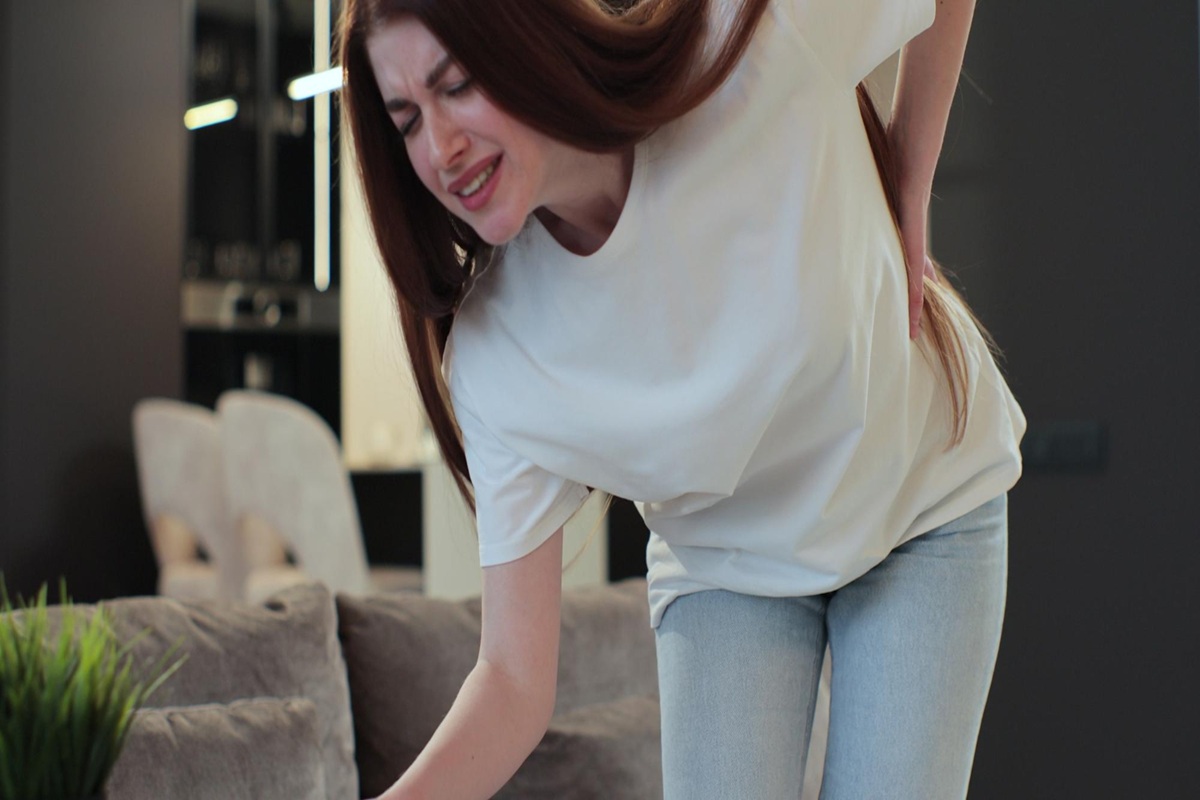Back pain is a common issue that affects millions of people globally, with chronic low back pain being one of the most frequent complaints. Studies show that up to 80% of adults will experience back pain at some point in their lives, making it a widespread health concern. While many factors contribute to back pain—such as poor posture, injuries, and sedentary lifestyles—one often overlooked source is pelvic floor dysfunction. The pelvic floor consists of muscles, ligaments, and tissues that play a vital role in supporting the pelvic organs. When these muscles become weakened, tight, or dysfunctional, they can cause pain that extends to the lower back.
This article will explore how pelvic floor health is connected to back pain, explain how pelvic floor dysfunction can contribute to chronic low back pain, and discuss effective treatments that target the root cause of the problem.
Anatomy of the Pelvic Floor
The pelvic floor is a group of muscles, ligaments, and connective tissues that form a supportive “hammock” at the base of the pelvis. These pelvic floor muscles, including the levator ani, coccygeus, and muscles of the urogenital diaphragm, are crucial for supporting the bladder, bowel, and reproductive organs. The external and internal pelvic floor muscles work together to maintain pelvic stability, control bodily functions like urination and defecation, and provide core support.
The pelvic floor muscles also attach to the sacroiliac joints, tailbone (coccyx), and lower back. Due to these anatomical connections, pelvic floor dysfunction can easily lead to pelvic floor back pain, creating tension or instability in the lower back region. When the pelvic floor muscles are either too weak or too tight, they can affect how your body moves and disrupt the balance of the spine and pelvis, leading to lower back discomfort. Understanding the anatomy of the pelvic floor helps highlight how closely pelvic health and back pain are linked.
The Connection Between Pelvic Floor and Back Pain
The pelvic floor is intricately connected to the rest of the body’s core system, which includes the abdominal muscles, diaphragm, and lower back muscles. When the pelvic floor muscles are not functioning properly, they can lead to pelvic floor lower back pain. Pelvic floor dysfunction occurs when the muscles become too tight, too weak, or lack proper coordination. This dysfunction can create a ripple effect throughout the body, particularly in the lower back, as the muscles struggle to maintain stability and support.
Pelvic floor dysfunction often coexists with other pelvic health issues like urinary incontinence, constipation, and sexual dysfunction. The pelvic floor and back pain connection is often found in individuals with pelvic floor disorders, including women postpartum, those who have had pelvic surgery, or people suffering from chronic pelvic pain conditions like endometriosis. A recent study revealed a strong correlation (95.3%) between pelvic floor dysfunction (PFD) and lumbopelvic pain in women. This study emphasized that tenderness, weakness, and the occurrence of pelvic organ prolapse (POP) are closely linked to pain in the pelvic and lower back regions.
How Pelvic Floor Dysfunction Can Cause Back Pain

Pelvic floor dysfunction often affects the alignment of the pelvis, leading to postural dysfunction. Posture plays a crucial role in maintaining spinal alignment, and any misalignment in the pelvis can cause postural issues that strain the back. Research also suggests that up to 80% of people will suffer from low back pain at some point in their lives. At any given moment, approximately 26% of adults in the United States report experiencing lower back pain, highlighting its significant prevalence.
Muscle Imbalance
Pelvic floor muscles can become either hypotonic (too weak) or hypertonic (too tight), leading to muscle imbalance. Weak pelvic floor muscles may not provide adequate support to the organs in the pelvis, leading to increased pressure on the lower back muscles. Overactive or tight pelvic floor muscles can pull the pelvis out of alignment, which leads to strain and pain in the lower back, creating what is commonly referred to as pelvic floor back pain.
This imbalance not only contributes to chronic pain but can also worsen conditions like urinary incontinence or fecal leaking. In addition, pelvic floor dysfunction can affect how we stand, sit, and walk, placing extra strain on the lower back muscles and aggravating the discomfort.
Core Instability
The pelvic floor is a fundamental part of the core system, which includes the diaphragm, abdominal muscles, and spinal muscles. If the pelvic floor is weak, it compromises core stability, leaving the lower back unsupported and vulnerable to injury. Core instability often leads to chronic low back pain as the surrounding muscles must work harder to stabilize the spine.
When the pelvic floor muscles are not functioning correctly, they are unable to provide the necessary stabilization to the core. This can lead to overuse of other muscles, such as the lumbar spine muscles, and can even cause compensatory muscle spasms in the back, further contributing to pelvic floor lower back pain.
Postural Dysfunction
Pelvic floor dysfunction often affects the alignment of the pelvis, leading to postural dysfunction. Posture plays a crucial role in maintaining spinal alignment, and any misalignment in the pelvis can cause postural issues that strain the back. For example, pelvic floor dysfunction can result in an anterior pelvic tilt, where the pelvis tilts forward, causing increased arching in the lower back (lumbar spine). This abnormal pelvic alignment forces the lower back to overcompensate, leading to chronic pain over time.
In particular, women who have experienced pelvic health issues, such as pelvic organ prolapse or who have undergone pelvic surgery, may find their posture affected, leading to increased lower back pain.
Trigger Points and Nerve Irritation
Trigger points, or tight knots in the pelvic floor muscles, can develop due to pelvic floor dysfunction. These trigger points can lead to pain referral patterns, where pain originating in the pelvic floor radiates to the lower back or sacroiliac joints. Trigger points can cause nerve irritation, leading to pelvic pain that extends into the lower back, hips, or legs.
Additionally, pelvic floor dysfunction can irritate nearby nerves, such as the pudendal nerve, leading to pain that spreads from the pelvic area to the lumbar spine. This type of pain referral pattern often goes unrecognized, causing patients to experience both pelvic and lower back pain without understanding the connection.
Self-Screening for Pelvic Floor Dysfunction
If you suspect that pelvic floor dysfunction may be contributing to your back pain, there are a few ways to self-screen for potential issues. By identifying some of these signs, you can determine whether your pelvic floor may be involved in your lower back pain and whether you should consult a healthcare professional.
- Urinary incontinence: Do you experience leakage when coughing, sneezing, or laughing? This could be a sign of pelvic floor weakness.
- Chronic low back pain: Is your lower back pain accompanied by pelvic discomfort or urinary issues? These symptoms may be linked to pelvic floor dysfunction.
- Pelvic pain: Do you feel a sense of heaviness, pressure, or aching in your pelvic area? Pelvic floor muscle dysfunction may be contributing to your discomfort.
- Postural issues: If you notice changes in your posture, such as a forward-tilted pelvis or a rounded lower back, it could be related to pelvic floor dysfunction.
If you recognize any of these signs, consider consulting a pelvic floor physical therapist or orthopedic physical therapist for a more in-depth assessment. Studies have also demonstrated that the prevalence of low back pain is significantly higher in individuals with stress urinary incontinence, with 78.8% of those affected by incontinence also reporting low back pain, compared to 57.4% in the non-incontinence group.
How Pelvic Floor Therapy Treats Pelvic Floor-Related Back Pain
Pelvic floor therapy is an effective treatment for addressing pelvic floor dysfunction and its associated back pain. Orthopedic physical therapy, in combination with pelvic floor rehabilitation, can help improve pelvic alignment, reduce tension in the pelvic floor muscles, and restore balance to the core system.
Here are some common treatments used in pelvic floor therapy:
Pelvic Floor Exercises

Pelvic floor exercises, such as Kegels, are specifically designed to strengthen weak pelvic floor muscles and improve muscle awareness. Strengthening the pelvic floor helps improve core muscle stability and pelvic alignment, which can reduce pressure on the lower back.
For individuals with tight pelvic floor muscles, relaxation techniques like breathing exercises or modified squats can help release tension and improve flexibility, ultimately reducing muscle spasms that contribute to pelvic floor back pain.
Manual Therapy
Manual therapy is often employed by pelvic floor physical therapists to release tight or tender muscles and trigger points. These hands-on techniques can help improve muscle flexibility, restore proper pelvic alignment, and reduce pain referral patterns that contribute to back pain.
Pelvic physiotherapy assessment often involves vaginal palpation to evaluate muscle tension and identify tender points that need to be addressed through manual therapy. This approach can significantly reduce pelvic floor-related back pain by targeting the underlying muscle tension.
Postpartum Care
Many women experience pelvic floor dysfunction after childbirth, especially if they’ve had a vaginal delivery or experienced conditions like postpartum stress urinary incontinence (SUI). Postpartum physical therapy focuses on restoring pelvic floor muscle strength, treating conditions like pelvic organ prolapse, and addressing core instability. This type of rehabilitation can help prevent chronic pelvic floor back pain and improve overall pelvic health.
Whole Body Care
Pelvic floor therapy takes a holistic approach by incorporating exercises that target not only the pelvic floor but also the entire core system. Therapists may recommend lumbar stabilization exercises, breathing exercises, and other techniques to strengthen the core and improve pelvic floor muscle coordination. By addressing the whole body, pelvic floor therapy ensures that the muscles work harmoniously to prevent both pelvic and back pain.
At Vitality Tulsa, we provide specialized pelvic floor therapy to relieve discomfort, improve core stability, and support recovery from issues like postpartum and chronic pelvic pain. Our personalized postpartum pelvic exercises, and holistic care is designed to restore your well-being and help you regain control of your pelvic health.
Conclusion
Your pelvic floor plays a critical role in maintaining core stability and pelvic alignment. When pelvic floor dysfunction occurs—whether due to muscle weakness, tightness, or injury—it can lead to pelvic floor back pain and chronic low back pain. Recognizing the connection between the pelvic floor and back pain is crucial for finding effective treatment. Through pelvic floor therapy, targeted exercises, and manual therapy, individuals can achieve long-term relief from pelvic-floor-related back pain and improve overall pelvic health.
FAQs
Can pelvic floor dysfunction cause back pain?
Yes, pelvic floor dysfunction can cause back pain by creating imbalances in the core muscles, affecting posture and pelvic alignment. These imbalances place additional strain on the lower back, leading to chronic low back pain.
What does pelvic floor back pain feel like?
Pelvic floor back pain often presents as a dull, aching sensation in the lower back. It can be accompanied by pelvic discomfort, urinary incontinence, or pelvic organ prolapse. Pain may also radiate from the pelvic region to the sacroiliac joints, hips, or legs due to pain referral patterns.
How can I relieve lower back and pelvic pain?
To relieve pelvic floor-related back pain, start by performing pelvic floor exercises and addressing muscle imbalances with the help of a pelvic physical therapist. Incorporate core stability exercises, improve posture, and seek manual therapy to reduce muscle spasms and tension in the pelvic floor.

